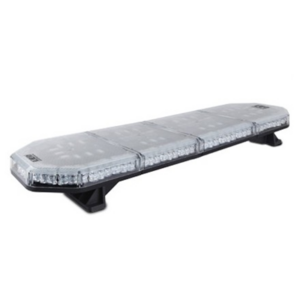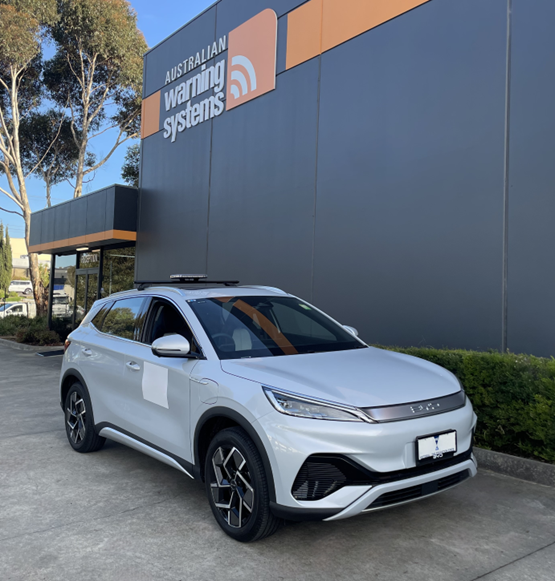How to choose a light bar
Light bars offer exceptional versatility, with a wide range of sizes, shapes, brightness levels, beam patterns, and mounting styles available. That means you can customise your setup for specific needs and applications, from nighttime rescues to chaotic construction sites.
But with so many options available, sourcing the most effective lighting solution can be tough.
Not sure how to choose a light bar?
At Australian Warning Systems, we specialise in equipping emergency and trade vehicles with reliable LED light bars.
In this buyers guide, we share expert tips on how to find the best LED light bar for your fleet. Keep reading to discover the key factors to consider when exploring each option.
What is a light bar?

A light bar is a high-performance lighting solution designed to deliver a broad and powerful beam. Packed with rows of advanced Light Emitting Diodes (LEDs), these sleek bars are typically mounted on the roof or front of vehicles, making them a go-to choice for enhancing visibility in challenging conditions.
Essential for emergency and utility vehicles, light bars are the backbone of operations like rescue missions, construction work, and nighttime patrols. Whether it’s an ambulance weaving through traffic or a mining truck navigating rugged terrain under the stars, light bars are built to handle it all.
Favoured for their unmatched brightness, energy efficiency, and rugged durability, LED light bars thrive in demanding environments. LEDs stand out for their compact design, impressive lifespan, and resistance to wear, offering superior value despite a higher initial investment.
Sound like the right solution for your fleet?
Read on to discover how to choose a light bar for your vehicles and operational needs.
Factors to consider when buying a light bar
Space and size

LED light bars come in a variety of sizes, so it’s essential to measure your available space before buying. The shape and size of your vehicle will heavily influence your choice.
Start by deciding where you’ll mount the light bar —common spots include under the rear of the vehicle, on the sides, and on the roof.
Then measure the length, height, and depth of the chosen area, and double-check your measurements to avoid any installation issues.
Once you know what available space you have, you can look for the right size light bar.
Mini light bars are portable and versatile, making them ideal for vehicles that need flexibility. Full-size light bars, on the other hand, are better suited for vehicles in frequent or heavy-duty use, as they deliver maximum lighting coverage.
Also consider how many LED rows your light bar has.
For larger vehicles like trucks, longer or dual-row LED light bars are a smart choice. With two rows of LEDs, these bars provide double the light output, making them perfect for demanding tasks.
Smaller vehicles or those with tight mounting spaces benefit from single-row LED light bars. Their streamlined design fits compact areas, reduces weight, and ensures hassle-free installation—all without sacrificing performance.
By aligning your choice of light bar with your vehicle’s size and available space, you can achieve the right balance of fit and function.
Brightness

When it comes to selecting an LED light bar, brightness is one of the most critical factors. After all, the core purpose of a light bar is to enhance visibility, especially in low-light conditions.
Brightness is measured in lumens, a unit that quantifies the total visible light emitted by the LED. Simply put, the higher the lumens, the brighter the light.
For most applications, a light bar producing between 10,000 and 15,000 lumens delivers excellent illumination.
If maximum brightness is your goal, consider a dual-row LED light bar. These bars can produce twice the light output of their single-row counterparts, making them an ideal choice for those who need exceptional visibility.
It’s also important to consider lux, which measures how light is distributed across a surface. Lux determines the shape and reach of the light beam.
A light bar with high lux but low lumens will create a concentrated, narrow beam, while low lux with high lumens results in a wide beam that doesn’t project far.
To get the right balance between brightness and beam spread, explore light bars with high-quality optics or reflectors designed to optimise both lux and lumens.
For a deeper dive into beam patterns, keep reading below.
Beam pattern
When selecting an LED light bar, brightness often gets the spotlight, but the beam pattern is just as important.
The optics of a light bar determine how efficiently it gathers and directs light, shaping it into a pattern that suits specific driving conditions and terrains.
Light bars generally emit two types of beam patterns: spot and flood.
Spot beams, sometimes called pencil beams, focus light into a concentrated stream, illuminating long distances. These are ideal for vehicles operating in low-visibility conditions, such as during nighttime or through dense fog and heavy rain. They offer the precision needed to cut through the darkness and help drivers see far ahead.
On the other hand, flood beams are perfect for spreading light across a wide area, creating a softer, more diffuse glow. These are well-suited for environments like construction sites or emergency scenes, where illuminating a broader field of view is essential for safety and functionality.
For those who need the best of both worlds, a combination light bar that offers both spot and flood capabilities can be a game-changer. It provides the versatility to adapt to different tasks, whether you’re navigating dark highways or lighting up a worksite.
By considering how and where your vehicle operates, you can choose a beam pattern that ensures maximum efficiency, safety, and functionality.
Wattage
Wattage indicates how much power an LED light bar consumes to operate. The more efficient the light bar, the less power it needs to produce bright, reliable illumination.
This becomes especially important when the vehicle’s engine is off, as high-wattage lights can quickly deplete the battery.
Choosing a low-wattage LED light bar allows you to use it for longer without stressing about draining power.
Unlike traditional halogen or HID lights, LEDs deliver superior brightness while consuming less energy, putting less strain on your vehicle’s electrical system.
Plus, LEDs generate minimal heat, protecting surrounding components and boosting longevity. Get the perfect combination of brightness and energy savings, proving you can have powerful, cost-effective lighting without unnecessary power usage.
IP rating
When choosing a light bar, one of the most critical factors to consider is its Ingress Protection (IP) rating.
This measures how well the light bar is sealed against elements like dust, mud, sand, and water. In other words, it shows you whether the internal components can stay protected in tough conditions.
A higher IP rating translates to better resistance, with most quality light bars offering levels between IP64 and IP69K.
Light bars rated between IP64 and IP67 can easily fend off dust and handle water sprays or jets but aren’t designed for full submersion.
If your vehicle needs to tackle challenging environments, an IP67 rating is a solid choice, capable of withstanding immersion in water up to a metre deep.
For extreme durability, an IP69K-rated light bar provides the ultimate defence, even against high-pressure steam-jet cleaning.
Given the unpredictable weather and demanding road conditions that both emergency and utility vehicles often face, investing in a light bar with a high IP rating is essential.
Industry compliance

In many industries, the right vehicle lighting isn’t just helpful—it’s mandatory.
Emergency vehicles like police cars, ambulances, and fire trucks rely on specialised lighting to alert and protect the public, ensuring their presence is noticed in critical moments.
Similarly, construction and mining vehicles operate under strict safety regulations, often requiring additional lighting to maintain compliance in hazardous environments.
Depending on the industry, equipping your fleet with premium, regulation-approved light bars not only enhances safety but can help your fleet avoid costly fines.
Curious about the legal requirements for your industry?
Discover more about light bar laws in Australia.
Mounting type and placement
The way you mount your LED light bar can make all the difference, ensuring it not only fits your vehicle but also performs its job seamlessly. Choosing the right setup depends on your vehicle type and how you plan to use the light bar.
You’ll usually find two versatile options: full-length U-brackets with adjustable slots or sliding base mounts, both designed to align with existing mounting points. Note that fixed side-mount L-brackets often require you to drill new holes in your vehicle.
Mountain placement also matters.
If your main goal is to provide clear warnings or illuminate the road for others, exterior mounting is your go-to choice. These light bars make it unmistakably clear what your vehicle is there to do—like a tow truck cruising down the highway to a rescue site.
For those seeking subtlety and speed, interior light bars may be more suitable. Mounted discreetly on the dash and hidden from view until action is needed, they’re ideal for undercover police vehicles or volunteer responders.
Reliable company

When investing in LED light bars, reliability and performance should be your top priorities.
Choosing a trusted provider with a solid reputation and positive reviews is essential to ensure quality and durability.
Many generic brands compromise on these critical factors, so it’s vital to pick a company known for crafting dependable products.
Because durability matters—your LED light bar should be built to last, even in the harshest conditions.
Understanding the challenges of emergency services and demanding industrial sites, we only supply light bars that prioritise reliability and versatility.
Our light bars are designed with high performance materials, engineered to endure environmental challenges while consistently delivering the illumination you need, wherever work takes you.
Shop a full range of LED light bars for your fleet
Choosing the right light bar starts with understanding how and where it will be used. By considering how your daily operations, alongside key features like brightness, beam pattern, size, and IP rating, you can confidently select an LED light bar that meets your requirements.
Now that you know how to choose a light bar, opting for a trusted brand is crucial.
At Australian Warning Systems, we offer an extensive range of LED light bars designed for unmatched durability and safety. Engineered to keep your fleet visible and ready for any situation, our products redefine reliability.
Need expert advice?
Contact us at 03 9796 5880 or email info@warningsystems.com.au. Based in Newcastle, we deliver premium LED lighting solutions across Australia.


